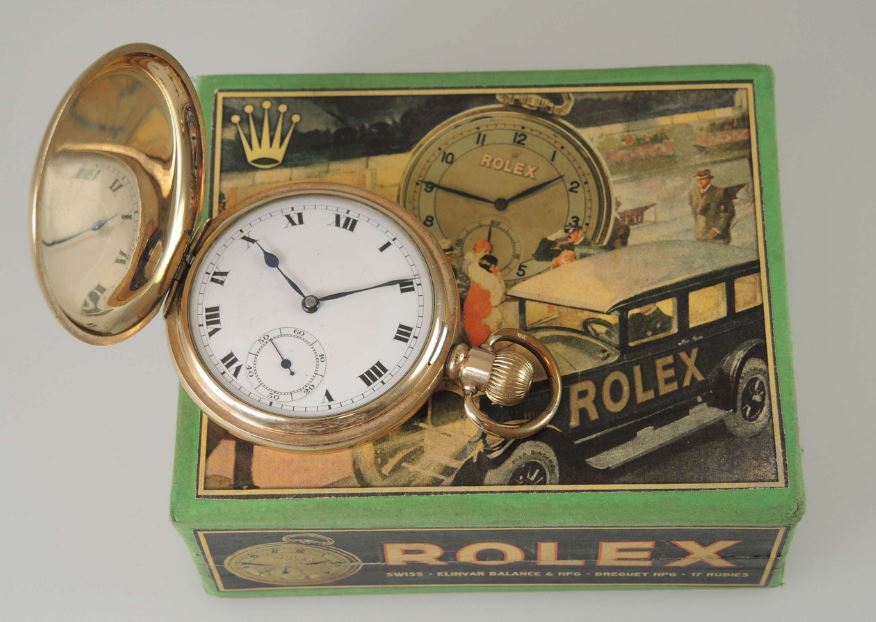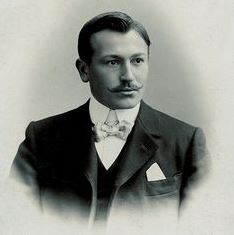It’s hard to imagine any discussion about watches excluding the name Rolex. It is quite possibly the most famous brand name in the horological world. Not only do they have an excellent reputation for producing the highest quality watches, but they also have an extensive history, dating back to the early twentieth century. Despite being a well-known Swiss brand, they have an origin in England.
Rolex was originally founded as Wilsdorf and Davis by Hans Wilsdorf and his brother-in-law, Alfred Davis in London, England in 1905. The company registered Rolex as the brand name of its watches in 1908 and became Rolex Watch Co. Ltd. in 1915. The name change was possibly due to the name Wilsdorf provoking anti-German prejudice in Britain during World War I. Initially, Wilsdorf and Davis’ main commercial activity involved importing Swiss movements to England and placing them in watch cases made by Dennison and others. These early wristwatches were sold to high street jewellers, who then printed their own brand names on the dial. The earliest watches from Wilsdorf and Davis were usually hallmarked “W&D” inside the case back.

Goals
The goal of Wilsdorf & Davis was to provide high-quality timepieces at affordable prices. Wilsdorf was also an early supporter of the wristwatch or ‘wristlet’ as it was known in the 1900s. At this time, the pocket watch was considered the only alternative for men, the wristlet was considered effeminate and unreliable. Wilsdorf was firm in his belief in wristwatches and was determined to popularise them. That is not to say that they didn’t produce pocket watches, there are many fine examples made by Rolex.
Rolex brand
After several years of business, Wilsdorf came up with the brand name “Rolex”. He wanted his watch brand’s name to be easily pronounceable in any language. He also thought that the name “Rolex” sounded something like a watch being wound. It was also short enough to fit on the face of a watch. There are several stories about how Wilsdorf came up with the name Rolex. According to Wilsdorf, he was riding on the upper deck of a horse-drawn bus along Cheapside in the City of London, when a genie whispered ‘Rolex’ in his ear. Others suggest that the name was derived from the French phrase “horlogerie exquise”, meaning “hoROLogical EXcellence”. Either way, Wilsdorf registered the brand name in 1908.
In 1925, Wilsdorf trademarked the Rolex logo. The original design was a golden five-pointed crown above Rolex in green text with a gold outline. The logo reflects the Rolex slogan, “A Crown for Every Achievement”.

Wristwatches
When the First World War started it soon became apparent that the traditional pocket watch was not suitable during trench warfare. The pocket watches were deep within the tunics of the soldiers and difficult to retrieve, and a watch chain was also likely to catch on snags in the trenches. As a result, soldiers began to wear modified pocket watches on their wrists, with lugs soldered on that allowed wrist straps. These were much easier to access than a pocket watch that was stored in a tunic. A soldier could aim their rifle, and turn their wrist to tell the time, rather than dig through their tunic pockets for their watch.
Manufacturers realised the need for change and started making wristwatches suitable for trench warfare. When the men returned home, wearing their wristwatches, it soon became an acceptable form of timepiece for men. Rolex was at the forefront of trench watch technology and produced many great examples. At some point, I hope to explore some of the trench watches that Rolex produced.

Switzerland
In November 1915, the company changed its name to Rolex Watch Co. Ltd. After First World War, the company left England in 1919 because of the high post-war taxes levied on luxury imports, which included Swiss watch movements. Additionally, there was a high cost associated with the export duties on the silver and gold used in the watch cases. As a result, Wilsdorf moved the company to Geneva, Switzerland, where the company’s name was officially changed to Montres Rolex S.A. in 1920. Eventually, the official name would be shortened to Rolex S.A. Around the time of the move to Switzerland, Wilsdorf bought out Davis’ share of the business and continued on his own. The company is still known as one of the finest in the horological industry, but our interest is in antique timepieces, so the history lesson will end here.
Aegler SA
Aegler SA was a maker of watch movements based in Bienne/Biel. It was the primary supplier of movements for Rolex during the early twentieth century. The company was founded by Johann Aegler when he opened a factory in Bienne in 1878. The firm specialized in manufacturing small watch movements. These were predominately used for ladies’ pendant watches. However, the movements were also of the right size for the wristwatches that Wilsdorf hope to popularise.
In 1906, the firm became known as Les Fils de Jean Aegler, under the management of Hermann Aegler. Hermann began working with Wilsdorf & Davis, in 1905, supplying the company with movements. After the firm began branding its watches “Rolex” in 1908, Hans Wilsdorf asked Aegler to increase production for his firm. The firms worked together for decades with both having ownership stakes in each company. Rolex ultimately acquired Aegler in 2004.
Sub-brands
Wilsdorf was aware there was a huge market for people who wanted a high-quality watch, but could not afford a Rolex. He started launching other brands, selling watches that would cost considerably less than a Rolex, but still be of excellent quality. The watches were fitted with high-quality movements from manufacturers such as The General Watch Company, not from Rolex’s normal source, Aegler SA. Brand names included Falcon, Genex, Lexis, Hofex, Unicorn, Rolexis, Rolwatco and Marconi. These watches were not sold through Rolex’s agents and they were not in any way branded with the word Rolex.
As a marketing exercise, it didn’t really work. Public perception was that these were ‘Rolex’ watches and the sales for the cheaper brand soared at the expense of the more costly one. However, in 1926, Wilsdorf got it right when he launched the Tudor brand. The major difference between the Tudor watches and those of the other preceding Rolex sub-brands was Wilsdorf’s willingness to promote them as an actual Rolex product. The Tudor brand is still a popular luxury brand today.
Related content
Rolex at Wikipedia.
Read about other Manufacturers and Makers.